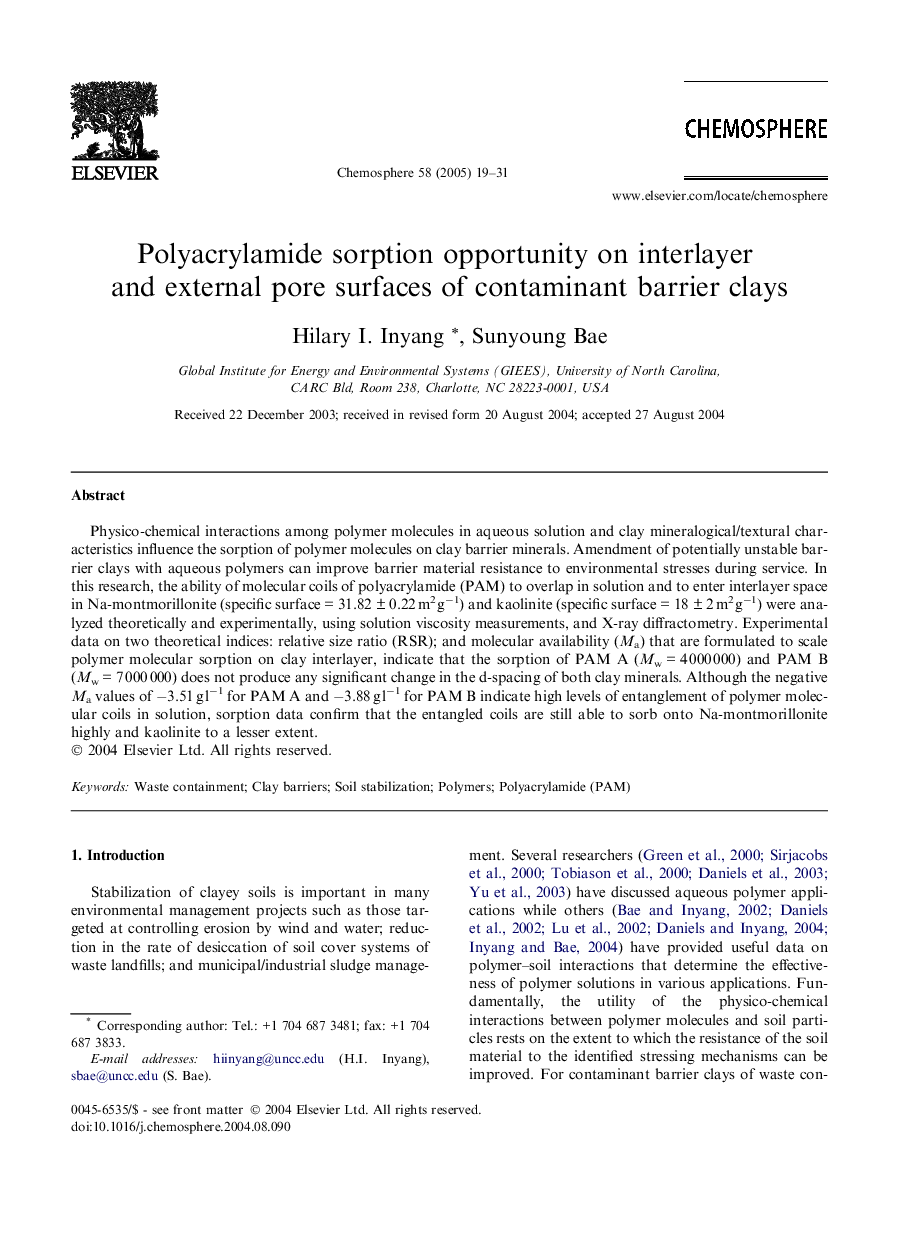| Article ID | Journal | Published Year | Pages | File Type |
|---|---|---|---|---|
| 9451464 | Chemosphere | 2005 | 13 Pages |
Abstract
Physico-chemical interactions among polymer molecules in aqueous solution and clay mineralogical/textural characteristics influence the sorption of polymer molecules on clay barrier minerals. Amendment of potentially unstable barrier clays with aqueous polymers can improve barrier material resistance to environmental stresses during service. In this research, the ability of molecular coils of polyacrylamide (PAM) to overlap in solution and to enter interlayer space in Na-montmorillonite (specific surface = 31.82 ± 0.22 m2 gâ1) and kaolinite (specific surface = 18 ± 2 m2 gâ1) were analyzed theoretically and experimentally, using solution viscosity measurements, and X-ray diffractometry. Experimental data on two theoretical indices: relative size ratio (RSR); and molecular availability (Ma) that are formulated to scale polymer molecular sorption on clay interlayer, indicate that the sorption of PAM A (Mw = 4 000 000) and PAM B (Mw = 7 000 000) does not produce any significant change in the d-spacing of both clay minerals. Although the negative Ma values of â3.51 g lâ1 for PAM A and â3.88 g lâ1 for PAM B indicate high levels of entanglement of polymer molecular coils in solution, sorption data confirm that the entangled coils are still able to sorb onto Na-montmorillonite highly and kaolinite to a lesser extent.
Related Topics
Life Sciences
Environmental Science
Environmental Chemistry
Authors
Hilary I. Inyang, Sunyoung Bae,
